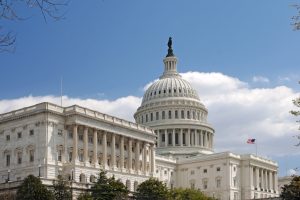Employee Benefits
Generative AI: A Tool, Not a Strategy
Prefer to listen instead of read? No problem! Listen to the blog post at any time by clicking here. Generative AI (or GenAI or simply AI) has emerged as a helpful and now ubiquitous tool in the workplace. It can complete numerous things: from streamlining workflows to automating repetitive tasks to crafting personalized content. This gives you and your employees time to focus on strategic and creative endeavors, refining strategies, and fostering client relationships. But here’s the catch—while AI can enhance productivity (up to 40% compared with people who don’t use it), relying on it as a replacement for strategic areas like content creation, HR, customer support, and project management is a misstep. It is a valuable tool and can be part of an overall strategy, not a replacement for strategy.
Read MoreCompliance Corner Session: No Surprises Act
Join Q4intelligence and Marissa Rufo of MZQ Consulting for a Compliance Corner session on the No Surprises Act. When: Wednesday, September 11, 2024, 11:00 AM Pacific / 2:00 PM Eastern Where: Zoom | Save your seat No Surprises Act Surprises may be fun for a birthday, but they are not fun for medical bills. And Congress agrees. As part of the Consolidated Appropriations Act 2021 (CAA21), Congress established protections for consumers related to surprise billing and transparency in healthcare, known as the No Surprises Act. The No Surprises Act prohibits surprise medical bills in certain situations and sets up an independent dispute resolution (IDR) process for payment disputes between insurance plans and providers. While the CAA21 introduced many new compliance requirements for plans, this session will focus specifically on the No Surprises Act. We’ll cover: The definition of surprise bills and in what scenarios they are prohibited The history of challenges to the IDR process and where we stand today A quick review of the other compliance requirements under the CAA21 Who is MZQ Consulting? MZQ Consulting is a boutique ACA and benefits compliance consultancy helping people navigate the complex world of employee benefits compliance through deep expertise and superb client service. Want to attend? Save your seat by clicking here. {% module_block module “widget_1cab5fe7-992d-479b-b8d1-f854882928af” %}{% module_attribute “btn” is_json=”true” %}{% raw %}{“link”:{“no_follow”:false,”open_in_new_tab”:true,”rel”:”noopener”,”sponsored”:false,”url”:{“content_id”:null,”href”:”https://us02web.zoom.us/meeting/register/tZAlfu2tqTotEt1u6mruOOyUF0X8PKz5CHJu#/registration”,”href_with_scheme”:”https://us02web.zoom.us/meeting/register/tZAlfu2tqTotEt1u6mruOOyUF0X8PKz5CHJu#/registration”,”type”:”EXTERNAL”},”user_generated_content”:false},”title”:”I want to attend”}{% endraw %}{% end_module_attribute %}{% module_attribute “btn_type” is_json=”true” %}{% raw %}”cta”{% endraw %}{% end_module_attribute %}{% module_attribute “child_css” is_json=”true” %}{% raw %}{}{% endraw %}{% end_module_attribute %}{% module_attribute “css” is_json=”true” %}{% raw %}{}{% endraw %}{% end_module_attribute %}{% module_attribute “cta” is_json=”true” %}{% raw %}”160409781517″{% endraw %}{% end_module_attribute %}{% module_attribute “definition_id” is_json=”true” %}{% raw %}null{% endraw %}{% end_module_attribute %}{% module_attribute “field_types” is_json=”true” %}{% raw %}{“animation”:”group”,”layout”:”group”,”custom_class”:”text”,”is_in_viewport”:”boolean”,”cta”:”cta”,”style”:”group”,”anchor_link_id”:”text”,”btn”:”group”,”btn_type”:”choice”}{% endraw %}{% end_module_attribute %}{% module_attribute “label” is_json=”true” %}{% raw %}null{% endraw %}{% end_module_attribute %}{% module_attribute “layout” is_json=”true” %}{% raw %}{“alignment”:”center”,”margin_top”:0}{% endraw %}{% end_module_attribute %}{% module_attribute “module_id” is_json=”true” %}{% raw %}100522671426{% endraw %}{% end_module_attribute %}{% module_attribute “path” is_json=”true” %}{% raw %}”@marketplace/maka_Agency/POWER THEME/modules/mini-cta”{% endraw %}{% end_module_attribute %}{% module_attribute “schema_version” is_json=”true” %}{% raw %}2{% endraw %}{% end_module_attribute %}{% module_attribute “smart_objects” is_json=”true” %}{% raw %}[]{% endraw %}{% end_module_attribute %}{% module_attribute “smart_type” is_json=”true” %}{% raw %}”NOT_SMART”{% endraw %}{% end_module_attribute %}{% module_attribute “style” is_json=”true” %}{% raw %}{“cta_size”:”pwr-cta–full-width”,”cta_style”:”pwr-cta–primary-solid”}{% endraw %}{% end_module_attribute %}{% module_attribute “tag” is_json=”true” %}{% raw %}”module”{% endraw %}{% end_module_attribute %}{% module_attribute “type” is_json=”true” %}{% raw %}”module”{% endraw %}{% end_module_attribute %}{% module_attribute “wrap_field_tag” is_json=”true” %}{% raw %}”div”{% endraw %}{% end_module_attribute %}{% end_module_block %}
Read MoreBreaking Down Silos: Six Essential Steps to Maximize Workplace Communication
Effective communication is about getting your point across and creating a flow of information that keeps everyone connected, engaged, and working toward the same goals. When communication falters, silos form—and before you know it, you’ve got teams working in isolation, missing the bigger picture. No one wants to feel like they’re stranded on an island at work, but that’s what happens when teams don’t communicate well. Diamonds are forever, but silos don’t have to be. Let’s dive into six essential steps to break down silos and maximize workplace communication.
Read More5500 Filings Are Due, But Don’t Panic If You’re Not Ready!
The 2024 calendar year has flown by, and the July 31st deadline for groups with January-December plan years to submit their 2023 5500 filings is now upon us. Overview of 5500 filings In general, 5500 filings, which contain details about the finances and operation of group health and retirement plans, are an annual requirement for such plans that had at least 100 participants as of the first day of the plan year. Only active employees enrolled in the plan contribute to the participant count (i.e., spouses, dependents, etc. should be excluded). For groups with wrap plan documents, a filing will be required for all benefits included in the wrap if the participant count for at least one of those benefits satisfies the filing threshold. Groups without wrap plan documents will need to determine on a benefit-by-benefit basis whether they should prepare a filing for that particular benefit. The filings are due to the IRS and the Department of Labor (DoL) by the last day of the seventh month after the plan year ends. So, while the 5500s for January 2023-December 2023 plans should be submitted by July 31, 2024, the filings for February 2023-January 2024 plans are due by August 31, 2024, March 2023-February 2024 plans need to file by September 30, 2024, etc.
Read MoreSupport Employees in Their Grief – No Matter the Grief
We often hear about the five stages of grief and expect people to grieve when they lose someone important, such as a close loved one. However, grief is not the same for everyone; it looks different depending on the person. Grief, quite simply, is a person’s response to loss. Some people may have moments where they cry uncontrollably, while others might not cry at all. They may want to be alone, or they may prefer to keep busy. We should respect how someone grieves and who or what they are grieving for, as this fosters an inclusive and supportive environment that prevents disenfranchised grief.
Read More




